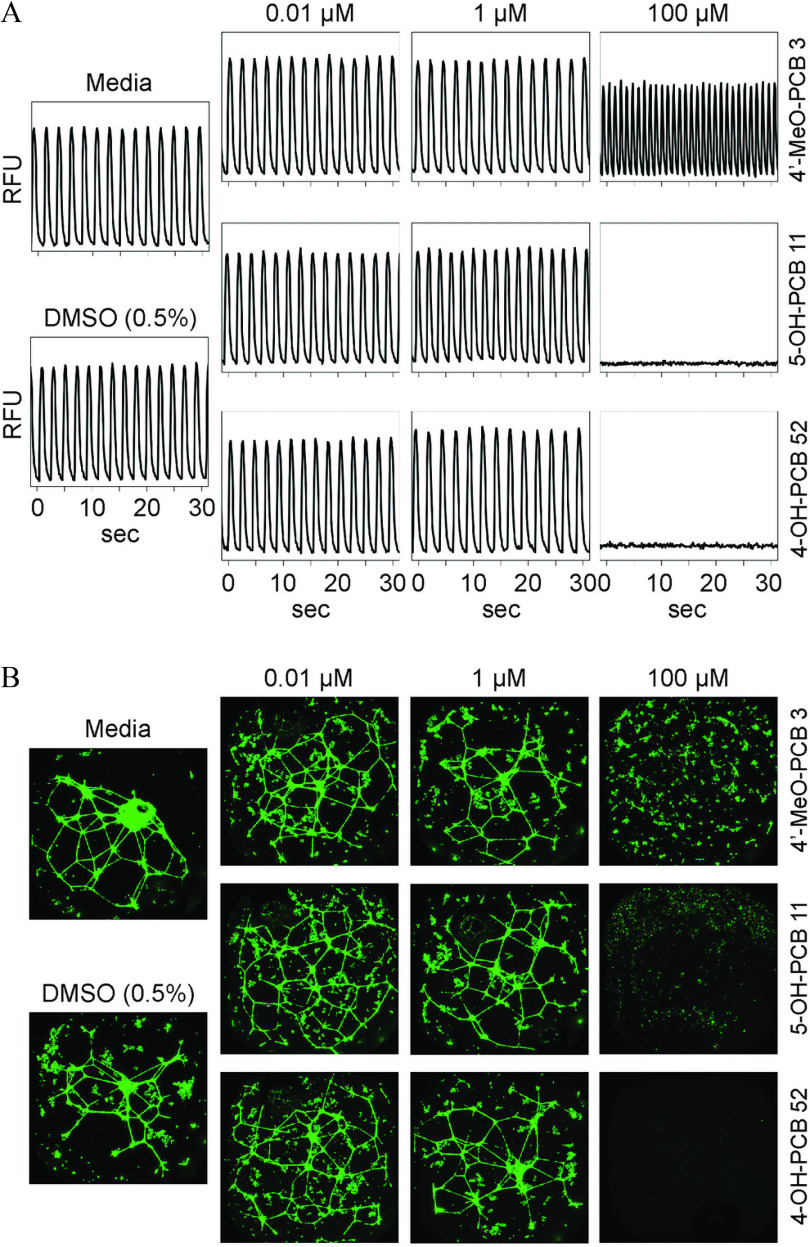Figure 2.
Effects of PCB metabolites on iCell®-cardiomyocytes and iCell®-endothelial cell. (A) Representative flux traces (90 min after treatment) for media, vehicle (0.5% DMSO) or three PCB metabolites at three concentrations on iPSC-derived CMs. (B) Representative images of the tubular networks for media, vehicle (0.5% DMSO), or three representative PCB metabolites at three concentrations on iPSC-derived ECs. Images were acquired at resolution. Chemical names and abbreviations of PCBs and metabolites are listed in Table S1. Note: CMs, cardiomyocytes; DMSO, dimethyl sulfoxide; ECs, endothelial cells; iPSC, induced pluripotent stem cell; PCBs, polychlorinated biphenyls.

